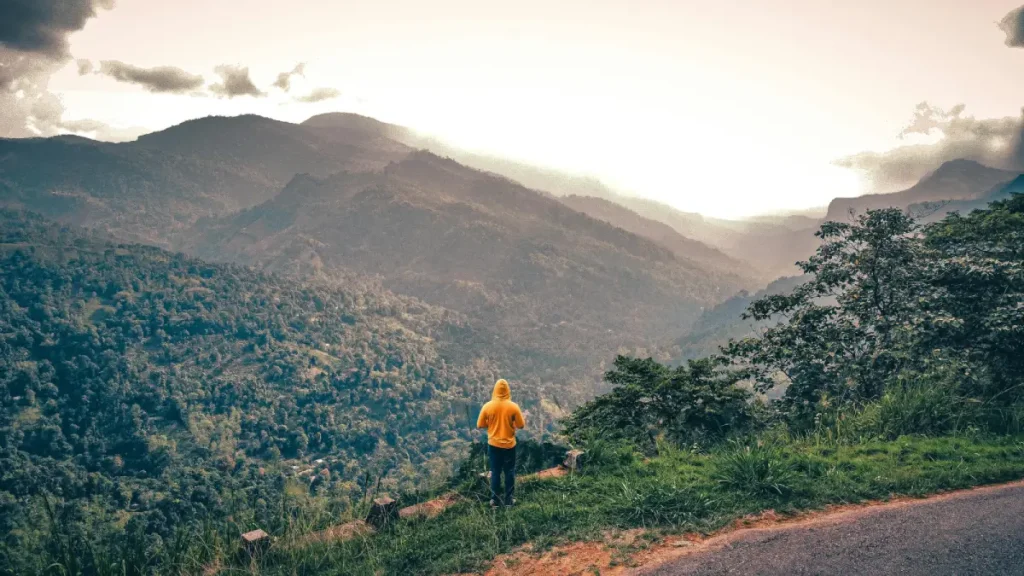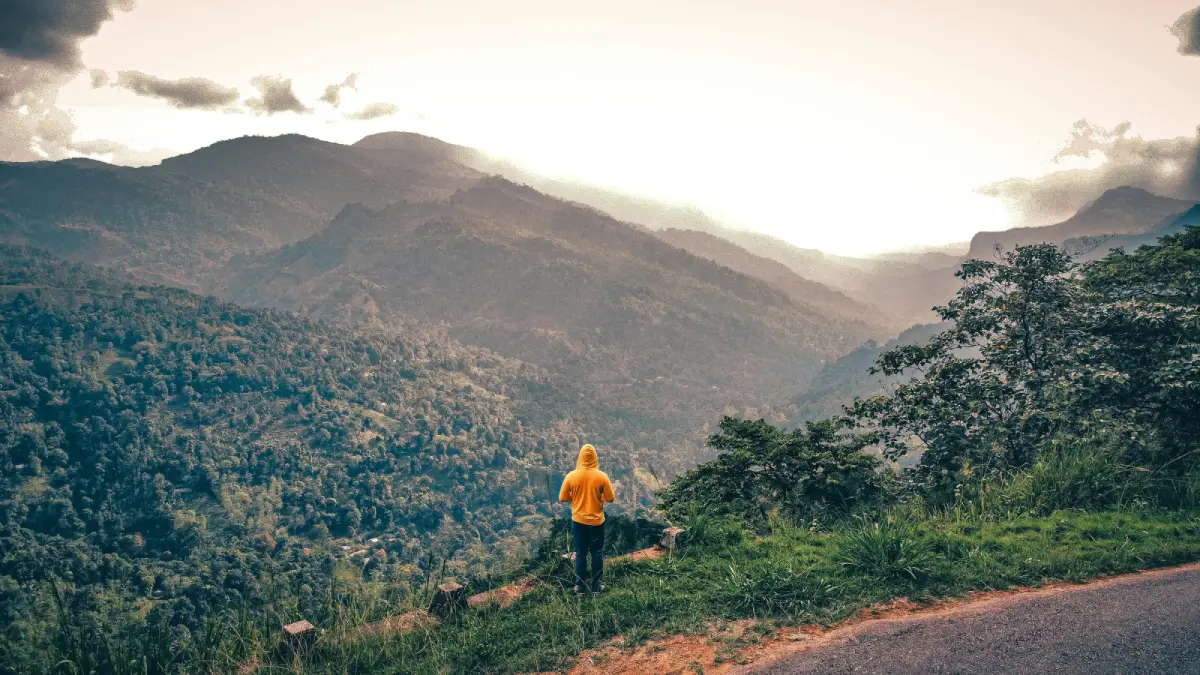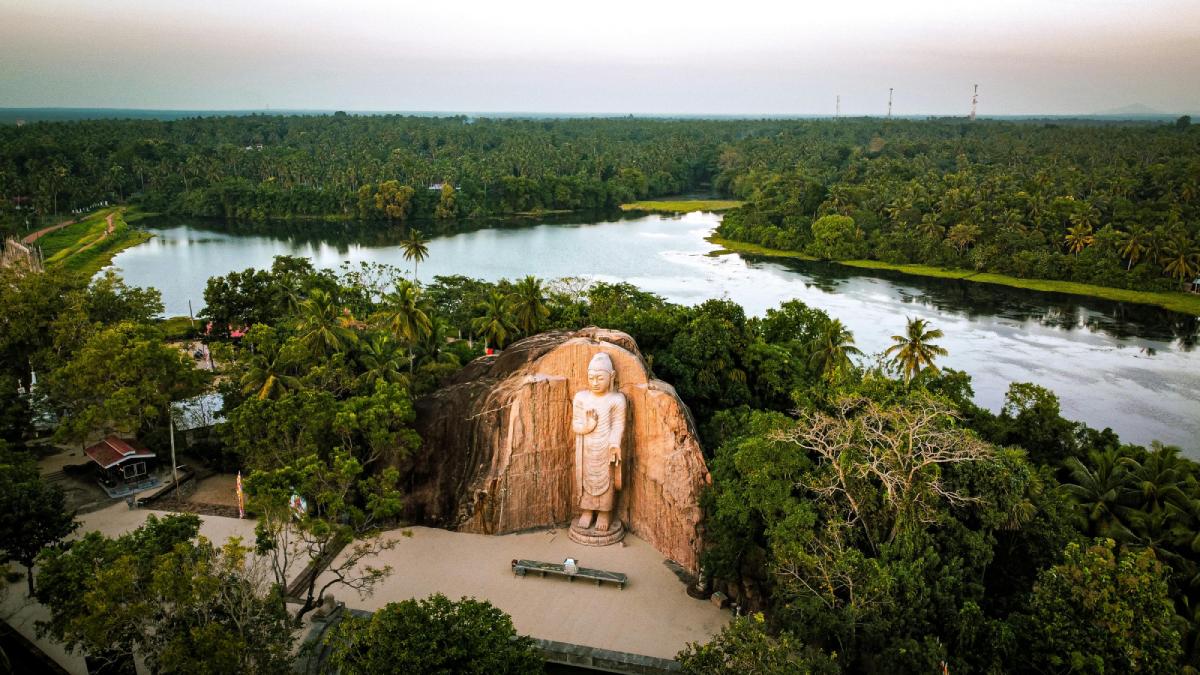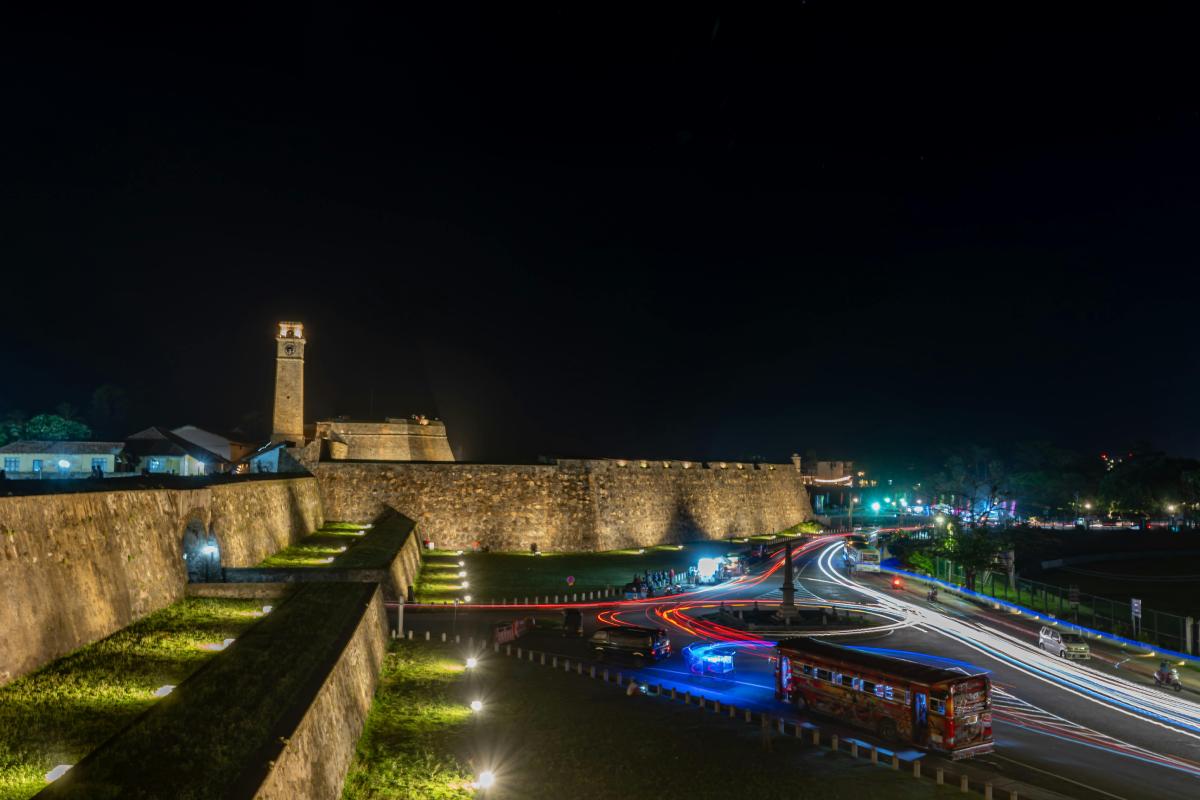Sri Lanka, the teardrop-shaped island nation off the southern coast of India, offers some of the most diverse and rewarding hiking experiences in South Asia. From mist-shrouded peaks in the central highlands to ancient forest reserves and coastal trails, this tropical paradise provides adventures for hikers of every skill level. The island’s compact size means you can traverse multiple climate zones and ecosystems in a single day, making it a hiker’s dream destination. Hiking Sri Lanka A Complete Guide.
The Diverse Landscapes of Sri Lanka
Sri Lanka‘s hiking terrain is remarkably varied for such a small country. The central highlands, known as the Hill Country, rise dramatically from the coastal plains, reaching elevations of over 2,500 meters. Here, you’ll find rolling tea plantations, cloud forests, and some of the island’s most challenging peaks. The climate is noticeably cooler at altitude, providing a refreshing contrast to the tropical heat of the lowlands.
The southwestern region features lush rainforests and rubber plantations, while the north and east offer drier landscapes with scrubland and unique geological formations. Coastal areas provide opportunities for beach walks and cliff-top hikes with stunning ocean views. This diversity means that no two hiking experiences in Sri Lanka are alike.
Top Hiking Destinations -Hiking Sri Lanka A Complete Guide
Adam’s Peak (Sri Pada)
Perhaps the most famous hike in Sri Lanka, Adam’s Peak stands at 2,243 meters and holds deep religious significance for Buddhists, Hindus, Christians, and Muslims alike. The summit features a depression resembling a footprint, which different faiths attribute to Buddha, Shiva, Adam, or St. Thomas.
The traditional pilgrimage season runs from December to May, when thousands of devotees make the nighttime ascent to reach the summit for sunrise. The hike takes 3-4 hours and involves climbing over 5,000 steps along a well-maintained path illuminated by lights during the season. The trail passes through several rest stops where vendors sell tea, snacks, and encouragement to weary climbers.
Starting from Dalhousie, the most popular base, hikers begin their journey around 2 AM to reach the summit before dawn. The reward is a spectacular sunrise over the island, with the peak’s shadow creating a perfect triangular projection on the landscape below. Outside the pilgrimage season, the trail is less crowded but also less maintained, making it more challenging but equally rewarding.
Horton Plains National Park
Located on a plateau at 2,100 meters elevation, Horton Plains offers one of Sri Lanka’s most accessible and scenic hiking experiences. The park’s main attraction is the World’s End cliff, which drops 870 meters straight down, providing breathtaking views across the southern plains to the ocean on clear days.
The standard circuit trail is 9 kilometers long and takes about 3-4 hours to complete. The path winds through montane grasslands, cloud forests, and past Baker’s Falls, a picturesque waterfall that cascades over rocky outcrops. The park is home to several endemic species, including the Sri Lankan sambar deer and numerous bird species.
Early morning hiking is essential at Horton Plains, as clouds typically roll in by 10 AM, obscuring the views from World’s End. The park opens at 6 AM, and arriving early also increases your chances of spotting wildlife. The cool, misty conditions can change rapidly, so waterproof clothing is essential.
Knuckles Mountain Range

The Knuckles Range, a UNESCO World Heritage site, offers some of Sri Lanka’s most pristine hiking experiences. Named for its resemblance to a clenched fist, the range contains five prominent peaks and numerous smaller summits. The area is renowned for its biodiversity, with over 1,000 plant species and numerous endemic animals.
Popular hikes include the Knuckles Peak trail, which takes 6-8 hours and requires a local guide. The route passes through dense forests, grasslands, and offers stunning panoramic views. The Mini World’s End trail is a shorter alternative, suitable for day hikers seeking dramatic cliff-top vistas.
The Knuckles region receives heavy rainfall, particularly during the monsoon seasons, creating lush conditions but also making trails slippery and challenging. The area’s remoteness and varied terrain make it ideal for multi-day treks, with several camping sites available for adventurous hikers.
Ella Rock
Ella Rock provides one of the most rewarding day hikes in the Hill Country. The trail begins near Ella town and takes about 2-3 hours to reach the summit at 1,041 meters. The hike follows railway tracks initially before branching off through tea plantations and forest areas.
The summit offers 360-degree views of the surrounding valleys, tea estates, and distant mountains. On clear days, you can see as far as the southern coast. The trail is well-marked but can be muddy during rainy periods. The relatively easy access from Ella makes this a popular choice for travelers staying in the area.
Pidurutalagala
Sri Lanka’s highest peak at 2,524 meters, Pidurutalagala offers a challenging but rewarding climb. The mountain is located near Nuwara Eliya and requires permission from the authorities due to telecommunications installations at the summit. The hike typically takes 4-5 hours and passes through cloud forests and montane vegetation.
The summit provides spectacular views of the Hill Country, including Adam’s Peak and the Knuckles Range. The cool climate at this elevation can be surprising, with temperatures dropping significantly, especially during early morning and evening hours.
Best Time to Hike
Sri Lanka’s hiking conditions vary significantly depending on the region and season. The island experiences two monsoon seasons: the southwest monsoon from May to September and the northeast monsoon from October to January. However, the mountainous terrain creates microclimates that can differ dramatically from the general weather patterns.
For the Hill Country, including Adam’s Peak, Horton Plains, and Ella Rock, the best hiking conditions occur from December to April. During this period, rainfall is minimal, and skies are generally clear, providing excellent visibility for mountain views. The dry season also means better trail conditions and safer hiking.
The Knuckles Range is best visited during the dry months of January to March and July to September, though weather can be unpredictable due to the area’s elevation and forest cover. Rainforest hikes in the southwest are possible year-round but are most comfortable during the drier months of December to March.
Essential Preparation and Safety
Hiking in Sri Lanka requires careful preparation due to the varied terrain and tropical climate. Physical fitness is crucial, especially for longer hikes and high-altitude treks. Regular cardiovascular exercise and leg strengthening will help you enjoy the experience more fully.
Weather conditions can change rapidly, particularly in mountainous areas. Waterproof clothing and proper rain gear are essential, even during the dry season. Layers are important due to temperature variations with elevation. At higher altitudes, temperatures can drop to near freezing, while lower elevations remain tropical.
Proper hiking boots with good ankle support and grip are crucial for navigating rocky, muddy, and steep terrain. Many trails in Sri Lanka feature loose rocks, wet surfaces, and root-covered paths that can be treacherous without appropriate footwear.
Sun protection is vital due to Sri Lanka’s proximity to the equator. High-SPF sunscreen, hats, and sunglasses are essential, especially for exposed mountain trails. The sun’s intensity can be deceiving at altitude, where cooler temperatures mask the risk of sunburn.
Wildlife and Environmental Considerations
Sri Lanka’s diverse ecosystems support an incredible array of wildlife, making hiking here a naturalist’s dream. The island is home to elephants, leopards, sloth bears, and numerous primate species. While large mammal encounters are rare on most hiking trails, they do occur, particularly in areas near national parks.
Bird life is abundant throughout the island, with over 400 species recorded. The Hill Country is particularly rich in endemic birds, including the Sri Lankan white-eye, yellow-eared bulbul, and Kashmir flycatcher. Early morning hiking often provides the best birding opportunities.
Leeches are common in many forested areas, especially during and after rain. While not dangerous, they can be annoying. Wearing long pants, using insect repellent, and checking for leeches regularly can help manage this issue. Salt or tobacco can be used to remove attached leeches safely.
Responsible hiking practices are crucial for preserving Sri Lanka’s natural heritage. Stay on designated trails, carry out all trash, and respect wildlife by maintaining appropriate distances. Many areas have fragile ecosystems that can be easily damaged by trampling or littering.
Cultural Significance and Local Communities
Hiking in Sri Lanka often involves interaction with local communities, particularly in rural areas. Many trails pass through villages where traditional lifestyles continue largely unchanged. These encounters provide valuable cultural insights and opportunities to support local economies.
Tea plantation workers are commonly encountered on Hill Country hikes. These communities have maintained their unique culture and traditions while adapting to life in the mountains. Respectful interaction and photography with permission can enrich your hiking experience.
Several hiking areas have religious significance, particularly mountains like Adam’s Peak and sites with ancient temples or meditation caves. Understanding and respecting these cultural aspects enhances the experience and demonstrates cultural sensitivity.
Local guides are invaluable resources for many hikes, providing not only navigation assistance but also insights into local culture, history, and ecology. Supporting local guide services contributes to community economic development and ensures access to traditional knowledge.
Practical Tips for Hiking in Sri Lanka
Transportation to trailheads can be challenging but is part of the adventure. Sri Lanka’s public transportation system, including buses and trains, serves most hiking areas. The journey to remote trailheads often involves multiple transfers and can be time-consuming but offers opportunities to experience local life.
Accommodation options range from basic guesthouses to luxury resorts, depending on the area. Booking in advance is recommended, especially during peak season. Many hiking areas have limited accommodation options, so flexibility in travel dates can be helpful.
Food and water considerations are important for longer hikes. While bottled water is widely available, carrying purification tablets or a filter can be useful for remote areas. Local cuisine is generally safe and delicious, but carrying high-energy snacks for longer hikes is advisable.
Permits and fees are required for some hiking areas, particularly national parks and protected areas. These can usually be obtained at park entrances but checking requirements in advance prevents disappointment. Some areas require advance booking or have visitor number restrictions.
Conservation and Sustainable Tourism
Sri Lanka faces significant environmental challenges, including deforestation, habitat loss, and climate change impacts. Responsible hiking practices contribute to conservation efforts and support sustainable tourism development.
Choosing eco-friendly accommodations and tour operators helps support businesses committed to environmental protection. Many operators now offer carbon-neutral hiking experiences and contribute to local conservation projects.
Participating in conservation activities, such as tree planting or wildlife monitoring programs, can add meaning to your hiking experience while contributing to environmental protection. Several organizations offer volunteer opportunities for visitors interested in conservation work.
Conclusion
Hiking in Sri Lanka offers an unparalleled combination of natural beauty, cultural richness, and adventure. From the spiritual journey up Adam’s Peak to the pristine wilderness of the Knuckles Range, each trail tells a story of this remarkable island’s geological, ecological, and cultural heritage.
The compact size of Sri Lanka means that diverse hiking experiences are always within reach, whether you’re seeking challenging mountain peaks, peaceful forest walks, or cultural encounters in rural communities. The island’s year-round hiking opportunities, friendly local communities, and relatively affordable costs make it an ideal destination for hikers of all backgrounds and budgets.
As you plan your hiking adventure in Sri Lanka, remember that each step supports local communities and contributes to the preservation of this natural treasure. The memories created on these trails, from sunrise views atop sacred peaks to encounters with endemic wildlife, will last a lifetime and inspire future adventures in this pearl of the Indian Ocean.
Whether you’re a seasoned mountaineer or a casual day hiker, Sri Lanka’s trails offer something special for everyone. The island’s hiking opportunities continue to develop, with new trails being established and existing ones being improved, ensuring that future generations can experience the magic of hiking in this tropical paradise.


